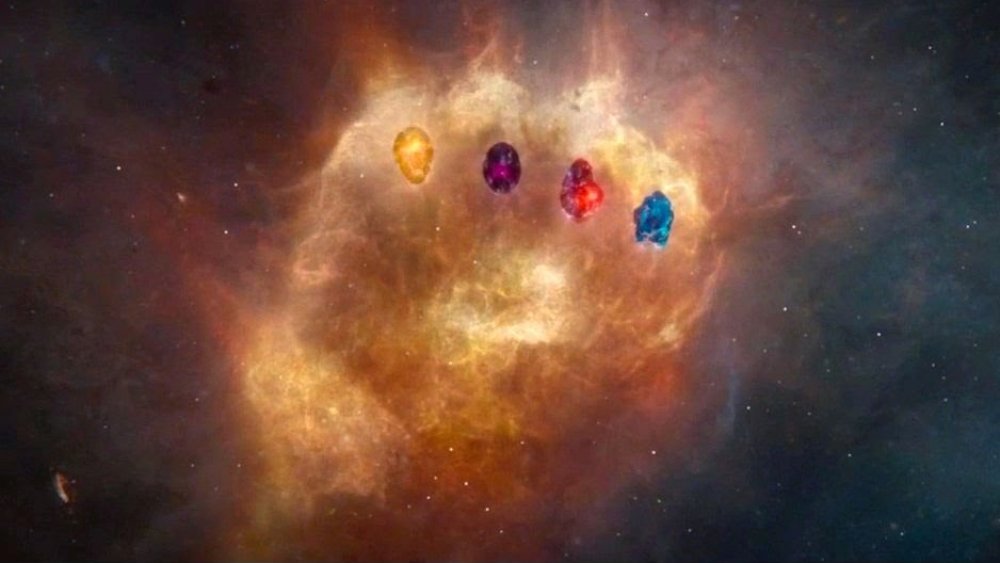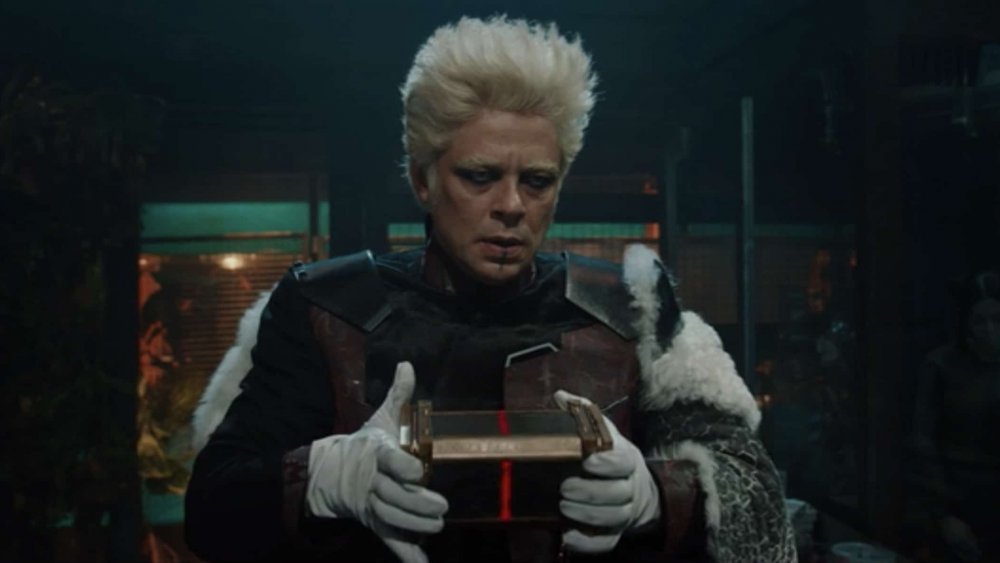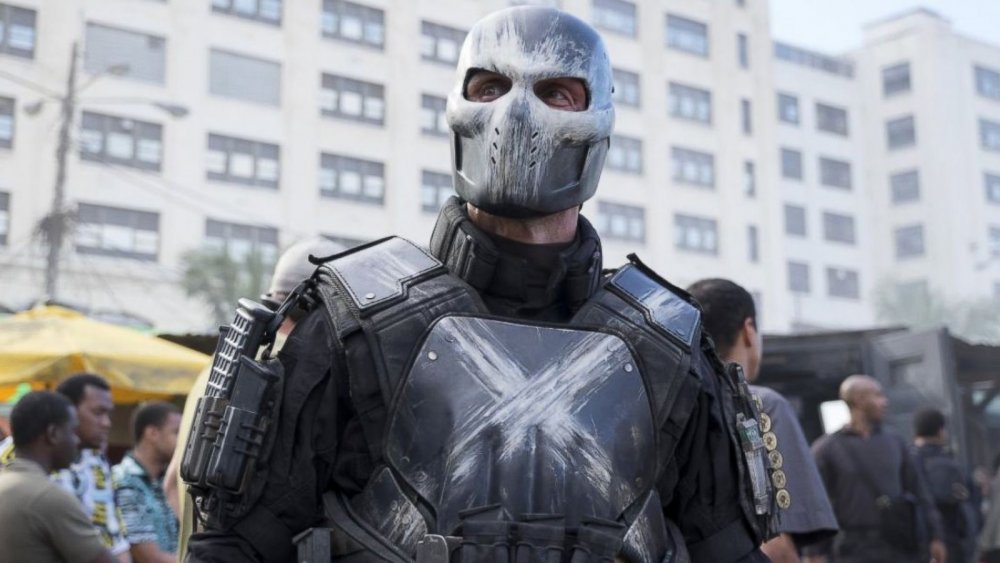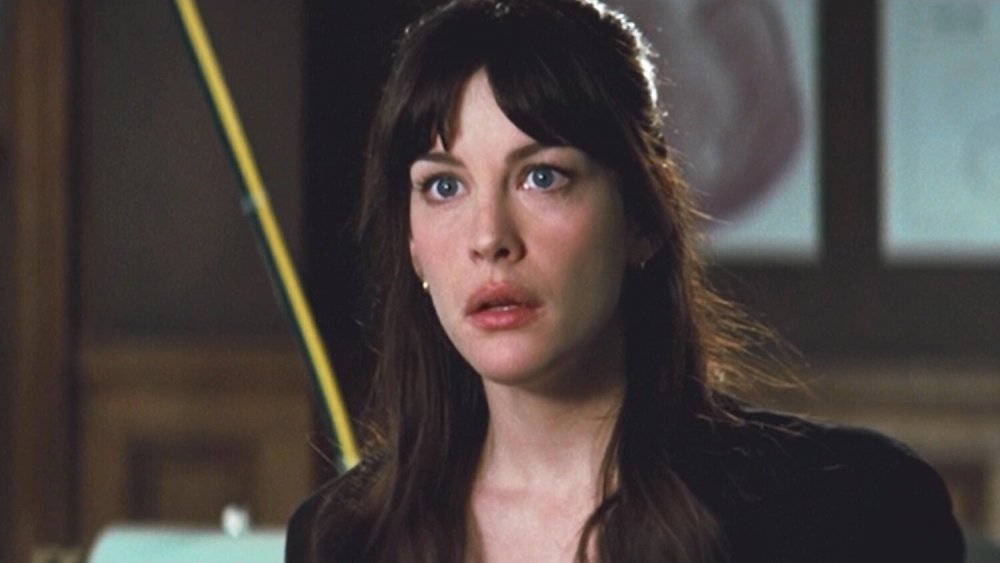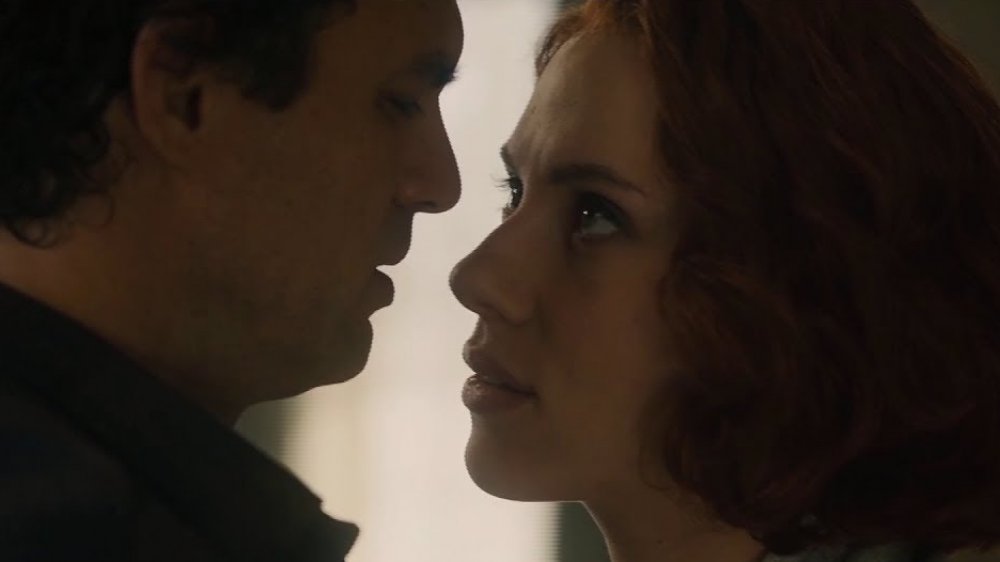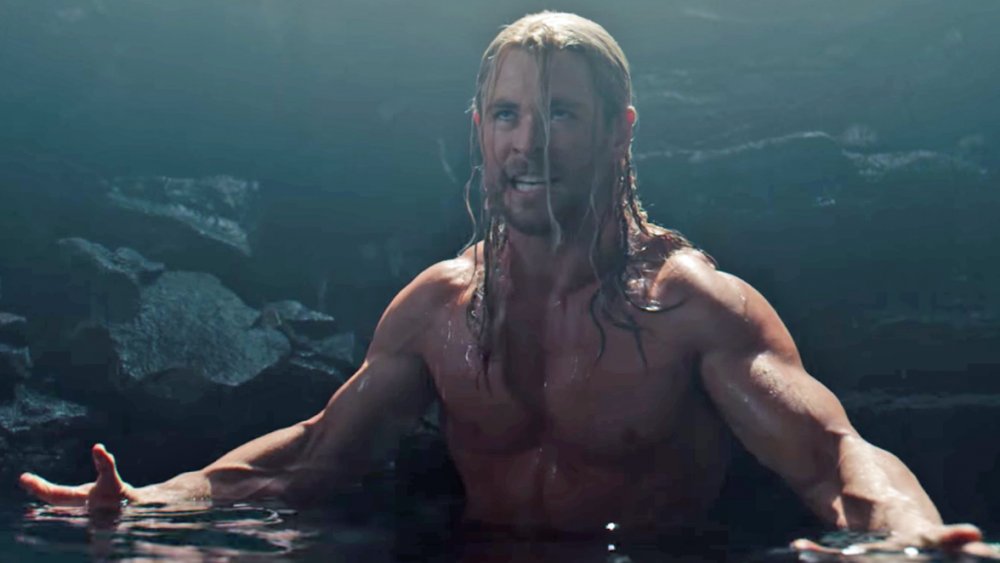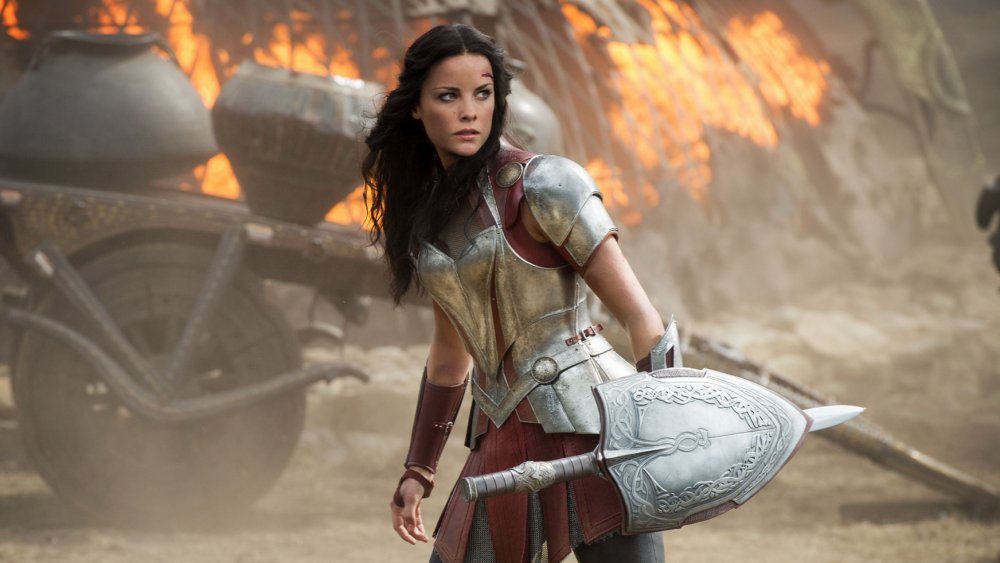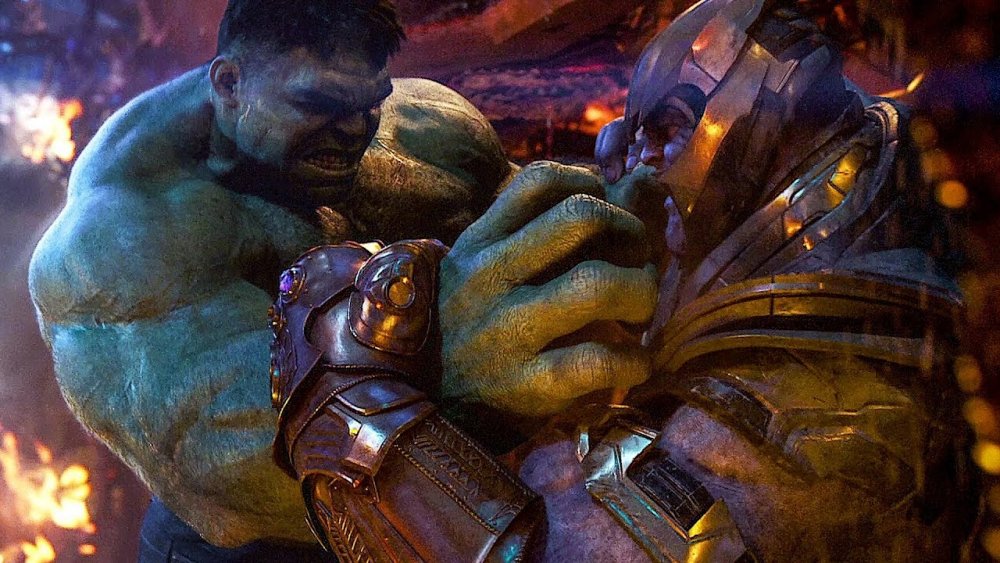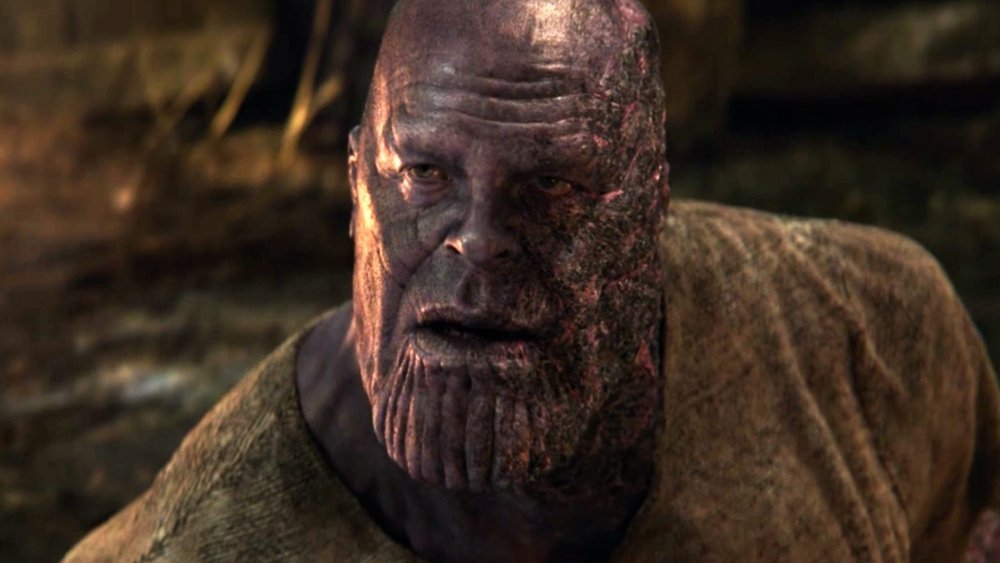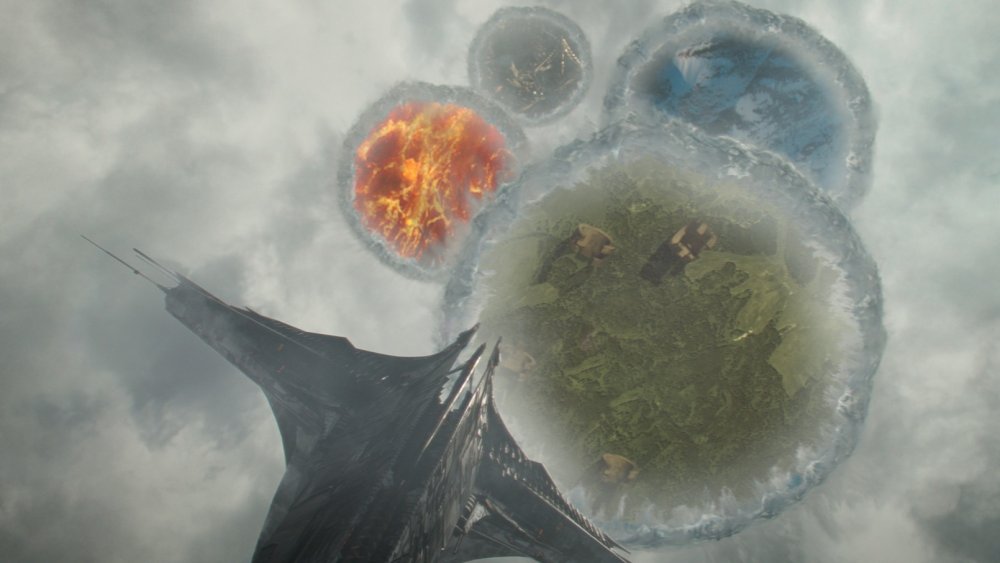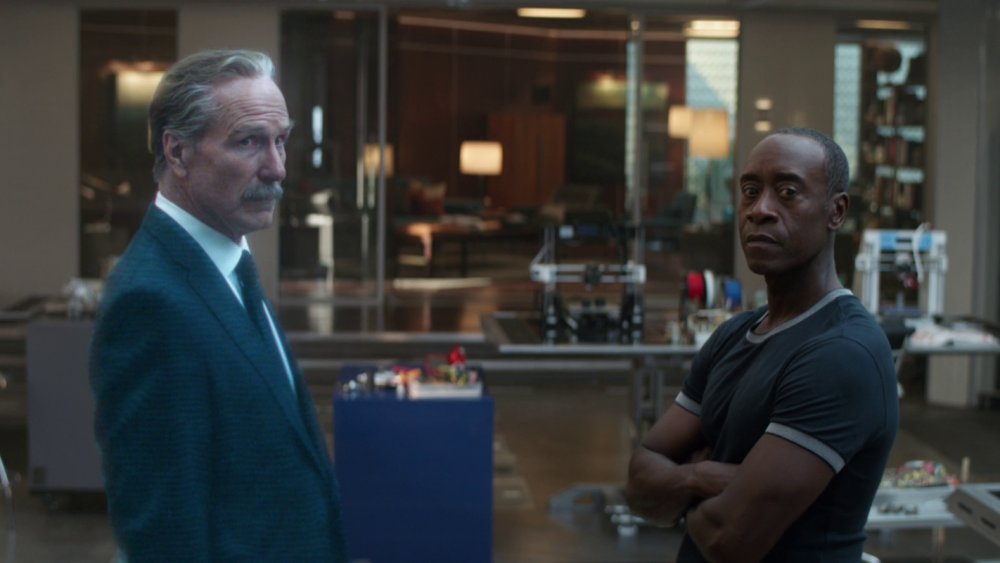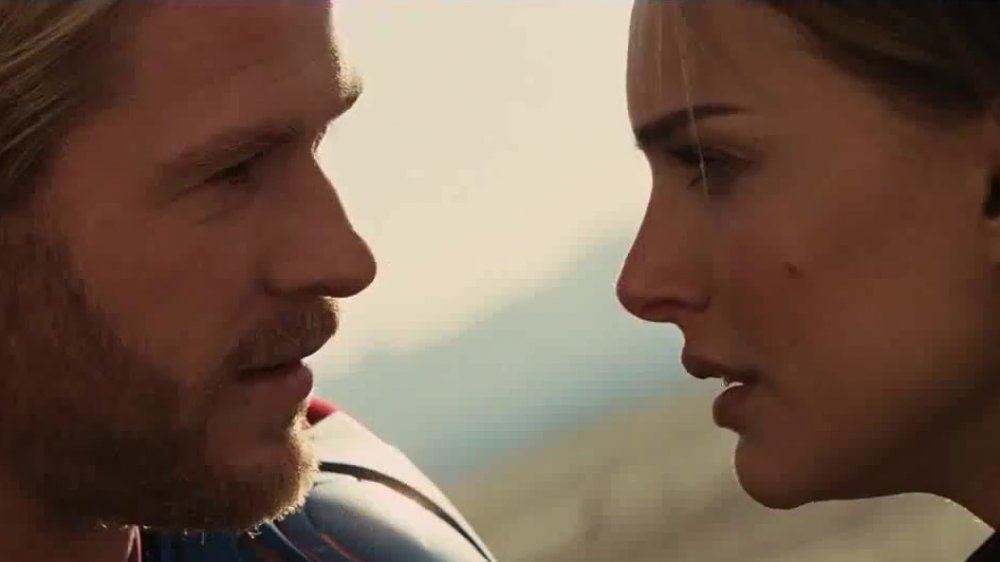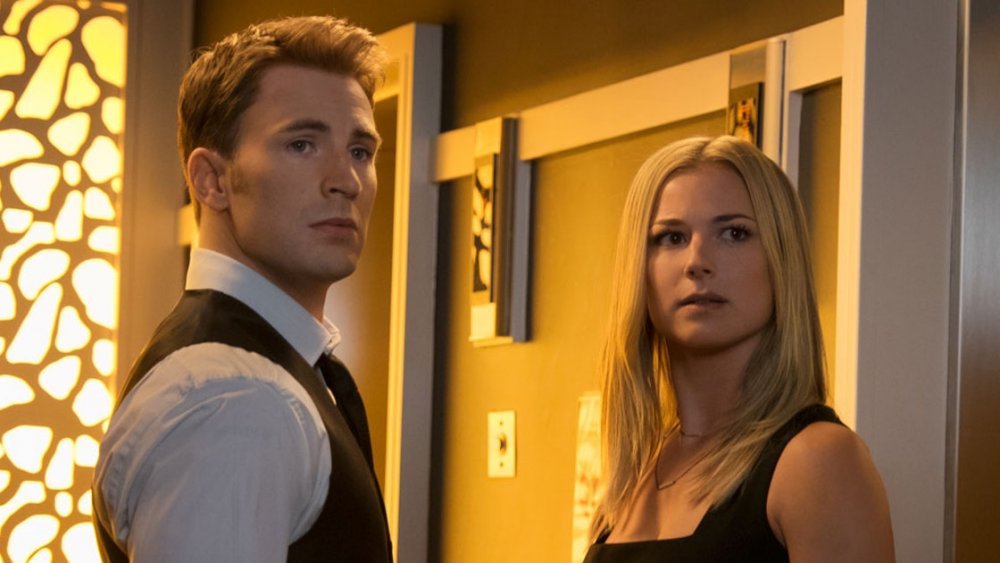MCU Plotlines That Never Went Anywhere
Marvel's highly-anticipated Phase 4 has its work cut out for it. Fortunately, the studio has a tried-and-true recipe for success: Weaving new characters and storylines into the continually-unfolding, ever-evolving tapestry of story created by the MCU's first three phases.
Black Widow will start things off by taking a look at the past of everyone's favorite Red Room graduate, Natasha Romanoff. After that, we're going to see the real Mandarin finally make his official entrance into the MCU in Shang-Chi and the Legend of the Ten Rings. And then there's Jane Foster. Left in the dust since Thor: The Dark World, she is poised to make a comeback as a brand new female Thor in Thor: Love and Thunder.
Yes, Marvel will be bringing many long-simmering storylines to a boil in Phase 4. But that doesn't mean they've tied up every loose end — not by a long shot. We've taken a look back through the Infinity Saga to see if we couldn't identify any stories or potential leads abandoned along the way. Sure enough, we found quite a few. These are the left-behind storylines, forsaken narratives, and forgotten characters arcs of the MCU so far.
One down, five to go
Back in 2018, fans turned out by the millions to see Thanos trek around the galaxy, gathering up the Infinity Stones in Avengers: Infinity War. A year later, they returned to theaters to see how the story ended in Avengers: Endgame. While Endgame brought an end to the Infinity Saga, there was more than one potential villain attempting to amass the universe-ruling power of the six Stones: Taneleer Tivan, also known as the Collector.
Tivan manages to obtain the Aether at the end of Thor: The Dark World, and, briefly, the Power Stone in Guardians of the Galaxy. However, at this point, it appears that Marvel thought the Collector/Infinity Stone tale wasn't worth following through on. The enigmatic fellow ends up losing the Power Stone just before the acquisition, and then, well, Thanos shows up. The big purple meanies trashes his place, then uses it as a trap to ensnare Gamora. Tivan's quest for the Stones ends there, as does his story. Is he dead? Is his collection entirely gone? We don't know — and we likely never will.
Unceremoniously abandoned villains
Killmonger. Loki. Thanos. The MCU has had some pretty amazing villains over the years. However, for every good villain with a great story and definitive ending, there is a baddie with a storyline that's either never finished, or brought to an abrupt and unsatisfying end.
Take Crossbones. Brock Rumlow made a splash in Captain America: The Winter Soldier, where he appears as a gritty Hydra agent that knows his stuff. He features prominently throughout the movie, showing up in the famous elevator fight sequence, tussling with Sam Wilson, and generally helping to reinforce the fact that Hydra has some genuine teeth beyond an army of nameless sleeper agents and a few corrupt politicians. He even makes the shift into legitimate villain status when he shows up as Crossbones in Captain America: Civil War ... that is, until he is casually blown up.
Similar fates befall Abomination and Red Skull. Sure, the latter shows up again on Vormir, but hardly in any capacity worth talking about. The point is, all of these are bad dudes that deserved decent storylines. Rather than keeping them in the mix, though, they've been shuffled off to atrophy on the sidelines as the MCU moves on without them.
The neglected daughter
Bruce Banner has had a long, tumultuous path through the MCU. One of few main characters to be recast, Banner's journey started in the dark, brooding hands of Edward Norton, only to shift to the lighter, more Avengers-friendly Mark Ruffalo once the first team-up film rolled around.
A good portion of Hulk's developing story was left in the dust after the recast — including Betty Ross. This love interest is heavily featured throughout the first and only stand-alone Hulk film as she walks the line between being Thunderbolt Ross's daughter and Bruce Banner's friend.
And that's where the weird part about the whole Betty Ross story comes into play. While she has been left behind, Betty's father has gone on to play a key role in the events of the Avengers franchise. The antagonizing military politician is slated to show up in Black Widow, and rumors are buzzing that the Thunderbolts may be in the MCU's future.
So where the heck has Betty been? Some held hope that she would reappear in Endgame, to no avail. While Jane Foster's reappearance in that film and her character's subsequent revival shows that any love interest can make a sudden reappearance, thus far, the Betty Ross storyline has been dormant for over a decade.
The strange Bruce/Nat/Hulk scenario
Bruce Banner's romantic relationships within the MCU have always been complicated. His connection with Betty Ross is strained by Big Green, and his later "friendship" with Natasha Romanoff ends up suffering from similar Hulk-induced tension.
Interestingly, both women are the catalyst to calming Hulk down and allowing Banner to regain control, but in the end, the romantic part of both relationships peters out without fanfare. When it comes to Natasha and Banner, the relationship between the pair of characters is primarily fleshed out in Avengers: Age of Ultron. At Clint's farmhouse, Nat offers to give everything up in order to run away with Banner. She even argues that their inner monsters should be a unifying point between them, rather than something that keeps them apart.
However, by the time the movie ends, we see Hulk in control as he heads off to Sakaar, and the lovebirds don't reunite until Infinity War, at which point things most definitely aren't the same. Much like Banner's relationship with Betty Ross, the Bruce/Nat train never quite pulls out of the station, leaving fans with more questions than answers.
Thor's Infinity Stone side quest
During Age of Ultron, Thor ups and heads off in the midst of an existential crisis to investigate the vision that Scarlet Witch gives him. Fortunately, the prophecy turns out to be important, and Thor manages to return in time to help his friends take down Ultron.
At the end of the movie, however, the Asgardian heads off to do some extra sleuthing in an attempt to discover why four of the Infinity Stones have shown up so close in time to one another. He explains that an "intricate game" is being played by "someone" and then he Bifrost-beams off to figure out what is going on. Good news, right? After all, the next movie does end up revolving around the six jewels.
Apparently, though, that line of reasoning didn't jive with the folks over at Marvel, and a change was made in the narrative direction. Rather than use Thor to naturally guide the story into the events of Infinity War, the god casually shrugs off the entire quest in the opening scene of Thor: Ragnarok when he mentions that he "didn't find any" of the Stones. While Ragnarok does ultimately dovetail into the Infinity War narrative via its post-credit scene, its revolutionary story retcons Thor's involvement with Thanos and the Infinity Stones entirely.
The absence of Lady Sif
One one of the best things about Thor's earlier franchise films is the presence of his entourage: the Warriors Three, sometimes Loki, and the formidable Lady Sif.
The Warriors Three play integral roles throughout the first two films, but in Thor: Ragnarok they are coldly bumped off by Hela as she conducts her coup on Asgard. While Loki ends up helping his brother, he also meets his death at the hands of Thanos early on in Infinity War. That leaves Lady Sif, alone of Thor's posse is being totally absent from Ragnarok, Infinity War, and Endgame.
Her whereabouts are an enigma. At the very least, it was eventually revealed that she wasn't anywhere for a while, as the Russo brothers explained that she had been snapped away at the end of Infinity War. While this helped fans rectify the situation from 2018 to 2019, Endgame's release ended that grace period. She's been brought back by the reversal of Thanos' snap, right? So where is she?
Sif doesn't drop in for the Thanos-smashing final battle. She isn't glimpsed in New Asgard. She is nowhere to be found at all. It appears that the entire Lady Sif story is trapped in a pre-Ragnarok time bubble — one that fans can only pray will burst with the release of Thor: Love and Thunder.
Hulk's Infinity War struggles
Everyone was excited to see Hulk take on Thanos in Infinity War ... until five minutes into the film when the two square off. It only takes the Mad Titan a few seconds to wipe the floor with the Jade Giant. Then, the Hulk proceeds to lie low for the rest of the movie, refusing to come out, no matter how bad things get.
Afterward, director Joe Russo explained that it wasn't that Hulk is necessarily afraid so much as that he is "tired of playing the hero to Bruce Banner." Okay, so the implication would be that he's holding back, right? Not genuinely committing to the fight and all that. The revelation got everyone excited to see what would happen in Endgame when the pair would hopefully have a second go of it.
The movie comes and goes without addressing the issue, however, apart from Professor Hulk's quick explanation in the diner about how he managed to merge the two personalities when no one was watching. Convenient — and a total letdown. Turns out, all Banner needed was enough time in the lab.
Thanos' ultimate victory?
This one is a bit more speculative, as it has to do with a pretty tricky can of worms opened up in Avengers: Endgame. In Endgame, the Ancient One explains to Bruce Banner that the removal of an Infinity Stone creates a miserable branch reality. In the moment, the hero placates this concern by guaranteeing that they'll simply return the Stone when they're done. At the end of the movie, Cap takes them back, and everything's hunky-dory. Right?
The thing is, the problem doesn't arise from creating alternative timelines in the past so much as where the current MCU timeline goes in the future. In the present timeline, Thanos boasts that he's destroyed the Infinity Stones so that no one can undo his work. The Russos cleared up the question of whether or not the stones still exist by clarifying that they did, just not in their condensed jewel forms.
That still leaves the problem of functionality. The way that the Ancient One explains it, the issue is the absence of the Time Stone as a chief weapon against the forces of darkness. Without the ability to use it, their world could be overrun. While her stone ends up back where it belongs, the present timeline is currently Time Stone-less. Will filmmakers ignore this fact during the next Doctor Strange movie or will they somehow find a way to work around the problem?
The Nine Realms left in the dust?
The Nine Realms figure prominently in the Thor films. Obviously, Asgard and Earth are heavily involved, but six out of the remaining seven also find their way into the MCU at some point or another. They are referenced throughout Thor's story and even show up in the larger MCU timeline, such as when Thor visits Nidavellir in Infinity War, or in Endgame when Thor and Rocket pay a quick visit to Asgard to retrieve the Aether.
While the Nine Realms are important within Thor's story, both politically and geographically, by the time the end of the Infinity Saga is reached, the bulk of them have been left in the shadows.
This shedding of the significance of the larger Nine Realms begins in Ragnarok when Thor, well, initiates Ragnarok. The ensuing destruction leaves his home planet in ashes and the remainder of his people exiled and in search of a new home. They end up settling in a little colony on Earth, and Thor proceeds to spend the next five years retreating into depressed hermitage. The colony survives, but not a word is breathed about the condition of the rest of the Nine Realms. Are we to assume that they've sunk into a chaotic mess? Are they independent nations now that Asgard is gone? What the heck happened there?
That Sokovia Accord drama
The Sokovia Accords are a pretty significant part of Avengers history. While the crew links up and genuinely saves the day during their first titular film, by Age of Ultron, they spend most of their heroic efforts simply mopping up their own mess. This naturally leads to the Sokovia Accords drama that takes center stage in Captain America: Civil War.
The question of whether or not the team should submit itself to government oversight is so intense that it tears the team apart. The illegal nature of Team Cap's vigilante efforts is briefly alluded to in Infinity War when Rhodey ignores Thaddeus Ross in order to help his friends, but beyond that, the legal restrictions on the group aren't really mentioned with any seriousness again.
Eventually, the group reunites and manages to bring down Thanos ... but what about those darned Accords that caused so much grief in the first place? One could assume that they're still in place, but it sure doesn't feel like the depleted group is under government control when they're shown operating "five years later" in Endgame.
Granted, Ross is eventually present at Stark's funeral, but beyond that subtle presence, the MCU has now had several movies where the Accords are either glossed over or ignored entirely. Will they ever show up again, or is the entire question of government oversight a moot point as far as Phase 4 is concerned?
The Thors
If there's one theme that shows up on this list more than any other, it's abandoned romances. The creators of the MCU might be able to bring the action, incubate some killer criminals, and cook up a mean origin story, but they just can't seem to get their ducks in a row when it comes to love.
Case in point: Thor and Jane Foster. The two get off to a rough start back in Thor when Foster hits her future god-boyfriend with her van, but ultimately, the pair finds love in spite of their differences. Did they have their issues? Sure. For instance, there was that time that Thor saved the world and then didn't take the time to pay Jane a visit. There was also that time that he saved the world again ... and still didn't stop in to say hi. Still, it felt a bit abrupt when, early in Thor: Ragnarok, the entire Jane and Thor romance is flippantly dropped with little more than a quick exchange between Thor and Loki about the "mutual dumping."
While the couple's relationship has been a dead end so far, it's one of the most likely candidates on this list to eventually be revisited in one form or another. Why? Because Foster is about to arrive back on the scene in Thor: Love and Thunder with enough firepower to show her ex a thing or two about skipping town without dropping in for a visit.
The whole Sharon Carter storyline
Although we haven't seen a lot of Agent 13, she's played a pretty important part in Steve Rogers' story. The great-nice of Peggy Carter, Sharon Carter helped Steve throughout the entire Winter Soldier fiasco and continued to pop up after that, giving a moving eulogy at her aunt's funeral and then ultimately helping Team Cap in Civil War.
The last time we saw Carter in action, she helped Rogers and his fugitive squad get their equipment, and then she locked lips with the supersoldier, giving expression to a potential romance that had been brewing under the surface for a while. Weird as it sounds, it appears the powers that be were setting up Cap to fall in love with his first love's niece. It doesn't sound great on the surface, but considering the whole frozen in ice for decades thing, we get it.
Except, after Civil War, Sharon Carter completely dropped off the radar, and Cap ultimately ended up heading back in time in Endgame to spend his life with Peggy Carter. So ... yeah, it looks like the MCU gods decided to circle back to the original love story and leave Sharon in the dust.
Seriously, you've got to feel bad for her. Sharon expressed a romantic interest in Cap and illegally helped him flout government authority, and what did she get for it? He left her for her aunt. While Sharon went on the run and eventually fell victim to the Snappening, her resurrected presence post-Endgame should be fleshed out a bit in The Falcon and the Winter Soldier. So hopefully we'll get some closure on that abandoned Steve and Sharon love story at some point in the future.
